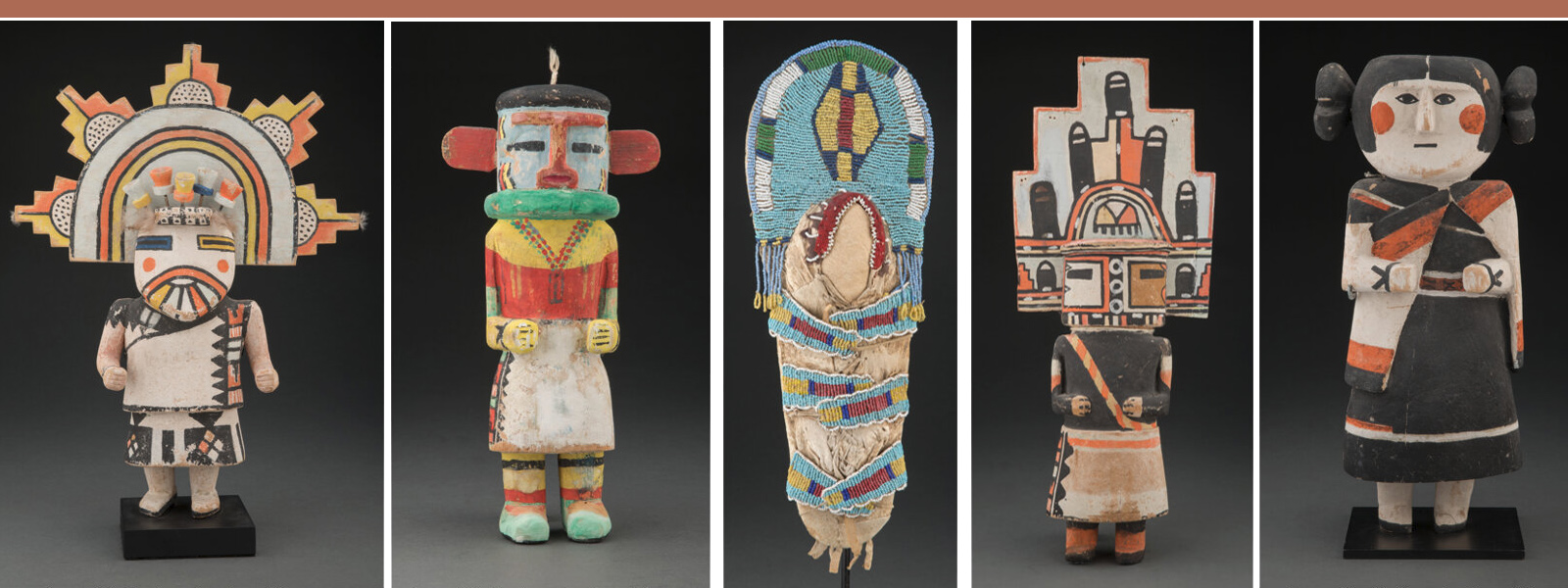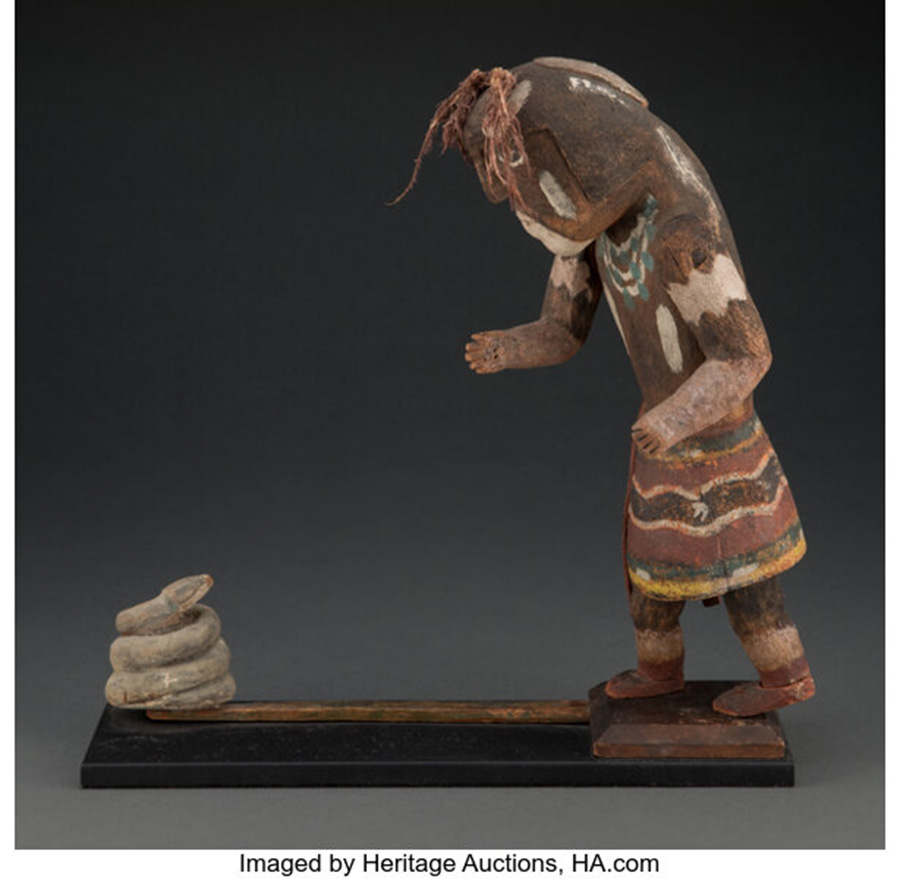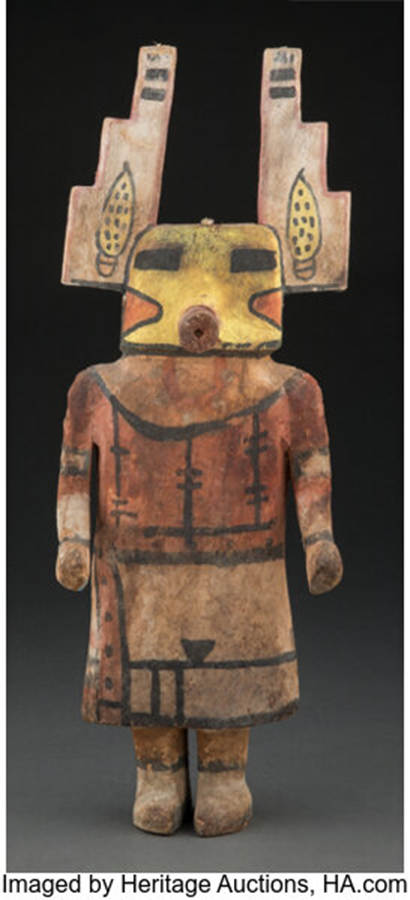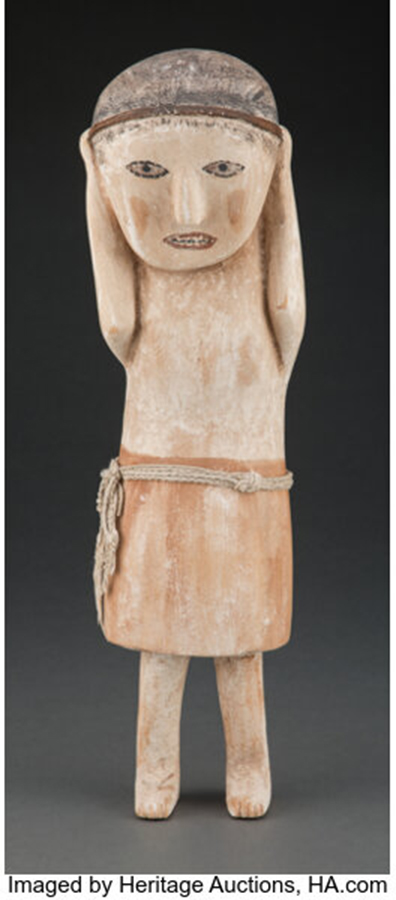THE COLLECTOR’S RARE AND IMPORTANT WORKS FROM THE PUEBLO TRIBES DATE BACK TO THE LATE 1800S
By Christina Rees
ALAN KESSLER COLLECTION ETHNOGRAPHIC SIGNATURE® AUCTION 8107
Oct. 14, 2022
Online: HA.com/8107a
INQUIRIES
Delia Sullivan
214.409.1343
DeliaS@HA.com
In 1997, the hammer came down at $265,000 at a New York auction for a Hopi kachina doll, by far the highest price paid for this type of traditional hand-carved figure. Up to that point, the highest price at auction for a kachina (or, katsina) doll was $20,000.
The man who consigned that valuable doll was Alan Kessler, and it would be fair to say that with that sale, the veteran collector made the market in kachina figures.
The 1997 auction was the first time Kessler brought a notable portion of his collection to market. But Kessler has never stopped collecting, and selling, and his name is associated worldwide with great expertise and appreciation of American Indian art.
Kessler will, for the third time, offer extraordinary pieces from his collection to the auction market, this time at Heritage Auctions’ Alan Kessler Collection Ethnographic Art Signature® Auction on October 14. The market for katsinam has exploded in recent years, and Kessler’s collection at Heritage offers a once-in-a-generation collecting opportunity for enthusiasts of the katsina carving tradition.
“This is a unique auction of a single owner’s collection,” says Delia Sullivan, Heritage Auctions’ American Indian Art Specialist. “Kessler’s careful and discriminating eye has allowed him to gather some of the most important and rare works to be presented at any auction of American Indian art in recent years. We expect that these works will enter some very special collections, both established and newer.”
Katsina dolls and figures have been carved and gifted within tribes of the Pueblo region of the Southwest for centuries (there is evidence of katsinam in the petroglyphs of New Mexico that date back hundreds of years), but our modern appreciation for the figures emerged around the turn of the last century. This coincided with the earliest commercial examples of katsinam offered to the public. Shortly thereafter, American and European museums, as well as established artists such as Marcel Duchamp and Max Ernst, recognized the significance of these figures and began collecting them as they lived much of their postwar lives in the Americas. During those years, European Surrealists and Cubists were especially fond of katsinam, and later on, influential artists such as Andy Warhol and Georgia O’Keeffe were collectors and fans of the form.
It was a 1970 exhibition at the Whitney Museum of American Art in New York that launched traditional Pueblo carvings into “the realm of art” as we understand it today. It almost goes without saying that if artists are paying such close attention to a traditional form and finding inspiration in it for their own work, there is a transcendent quality in that art. The katsina tradition holds a special place in the hearts of working artists and has for more than a century. Kessler himself, who is based in Santa Fe, is an established artist with a long exhibition history in New York City and beyond.
Many of Kessler’s offerings at Heritage would be considered pre-commercial, and also quite early, and therefore highly valuable examples of the figures. One of the most extraordinary pieces is an early Hopi polychrome wood dance figure, circa 1890, facing off with a coiled rattlesnake. This is the only known example of a snake-dancing figure with a separate snake. The figure wears a fringed buffalo-hide sash emblazoned with a serpent; his stylized head sports naturalist features and “secular” eyes. The snake looks up into the dancer’s face, hypnotized by the dancer’s gaze.
Another significant offering is an extremely rare Zia wood figure; very few carvings have come from this Pueblo. This secular-eyed beauty shows a toothy smile and holds a pottery canteen, and she wears a finely knotted string sash. Kessler has said that she is the only known carving of this type from the Pueblo.
In this auction, the Zia figure keeps company with a number of polychrome figures and katsinam from Zuni and Hopi Pueblos, as well as Navajo, many dating back to the earlier part of the last century and into the late 1800s. Among the dolls are depictions of warriors, butterfly maidens, infants, clowns and grandmothers, as well as Hopi dolls carved by the famed Wilson Tawaquaptewa in the late 1800s. There’s even a charming and boldly striped horned katsina puppet – a Hano Clown, or Koshare – attributed to Jimmy Kootz and dating back to 1903.
 CHRISTINA REES is a staff writer at Intelligent Collector.
CHRISTINA REES is a staff writer at Intelligent Collector.




